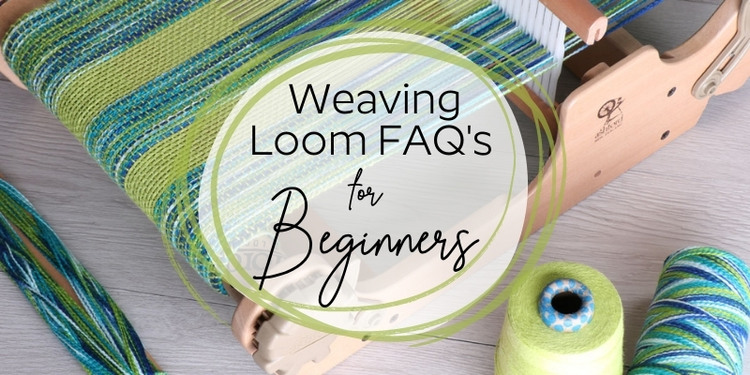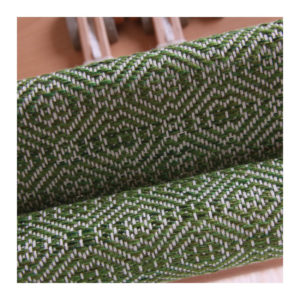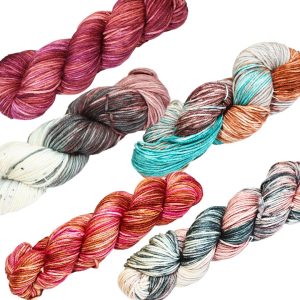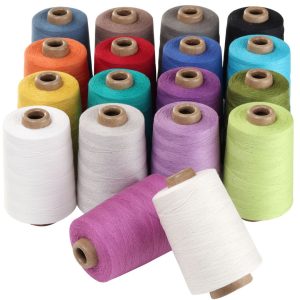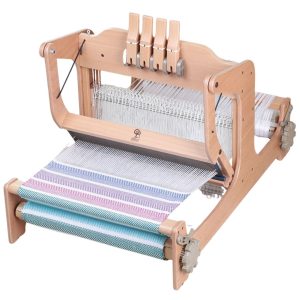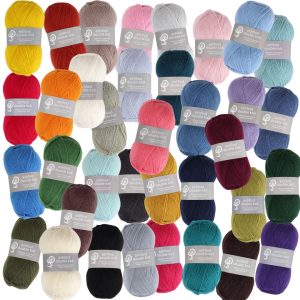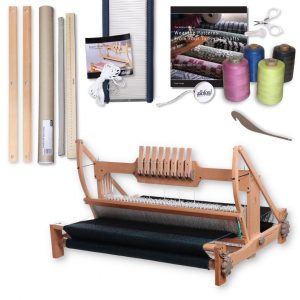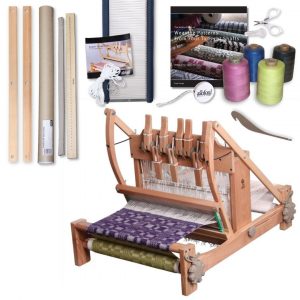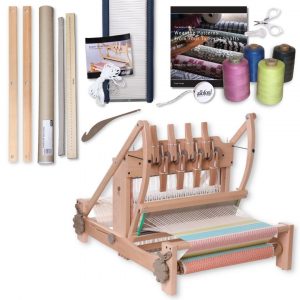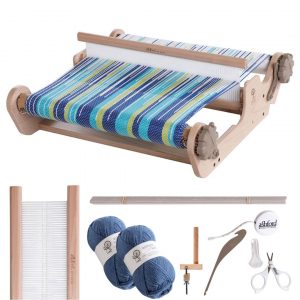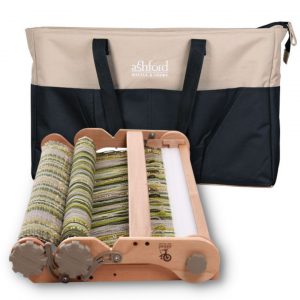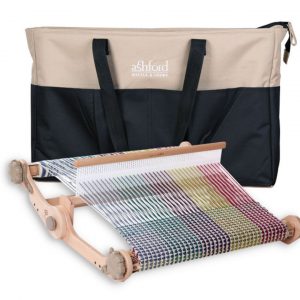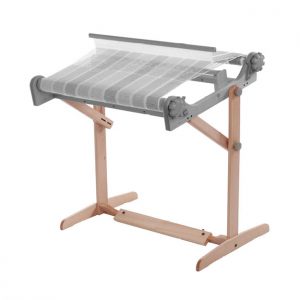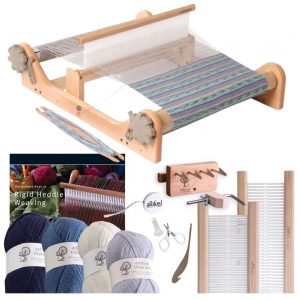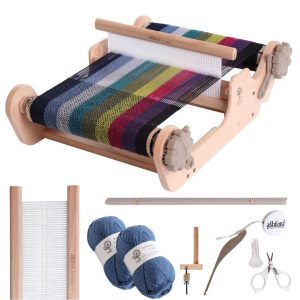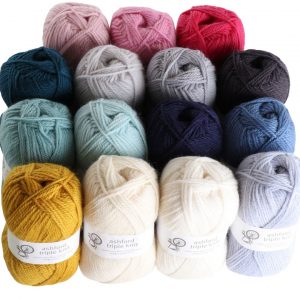The following article covers lots of questions we are asked in regard to purchasing a weaving or learning to weave.
What is the best weaving loom for beginners?
Is a four or eight shaft table weaving loom best for a beginner?
What can you make with a weaving loom?
Is weaving on a loom hard?
Common mistakes in weaving
Learn the simplest type of weaving
The basics of weaving explained
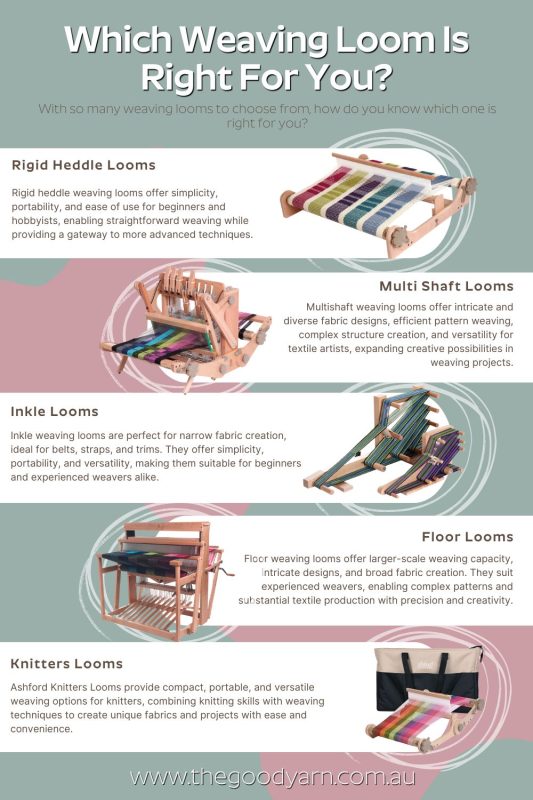
What is the best weaving loom for beginners?
There are a few different types of weaving looms that are suitable for beginners, depending on your preferences and budget. Here are a few options to consider:
Frame weaving looms:
Weaving frame looms are a fantastic option for beginners who want to start with a small and portable loom. And there are so many things you can make with them. Frame looms consist of a simple wooden frame with two crossbars that hold the warp threads in place. They are easy to set up and use and can be used to make a variety of projects, such as scarves, wall hangings, and small rugs. We have the perfect beginners weaving frame kit.
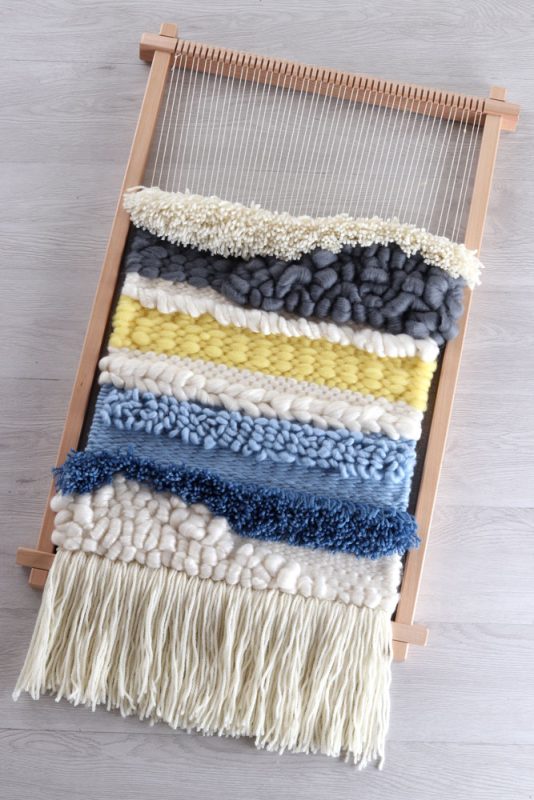
Rigid heddle looms:
Rigid heddle looms are slightly more complex than frame looms, but still relatively easy for beginners to learn on. This style of weaving loom has a heddle (a device used to separate the warp threads). This is attached to a frame and can be used to create a variety of patterns and textures.
They are also portable and can be used to make a wide range of projects. Ashford make a their Rigid Heddle Looms in a great selection of different sizes. Including the 40cm Rigid Heddle Loom, 60cm Rigid Heddle Loom, 80cm Rigid Heddle Loom & 120cm Rigid Heddle Loom. They also make a single variable sized loom stand that can be used on the three smaller sizes.
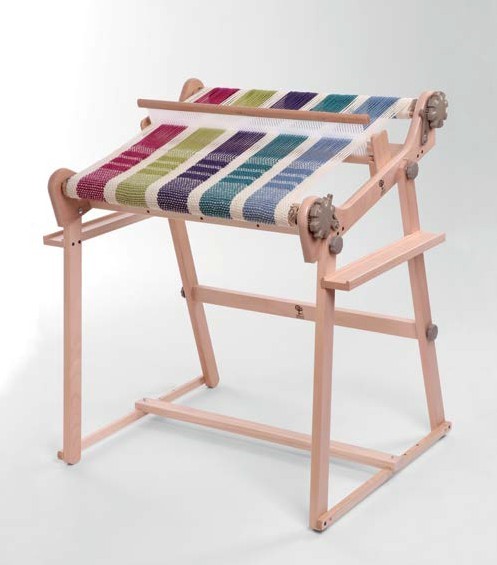
Inkle Looms:
An inkle loom is a small, portable loom used for weaving narrow bands or straps. It typically consists of a frame with two pegs or posts at either end. And then a series of vertical warp threads stretched between them. The weaver uses a belt shuttle or another tool to pass a weft thread over and under the warp threads. Creating a pattern or design along the band.
Inkle looms have been used for centuries to weave decorative trims, belts, straps, leads and other narrow textiles. They are often used by crafters and hobbyists and are popular for their portability and ease of use. Ashford have inkle looms in two popular sizes. The standard inkle loom and the smaller inklette loom
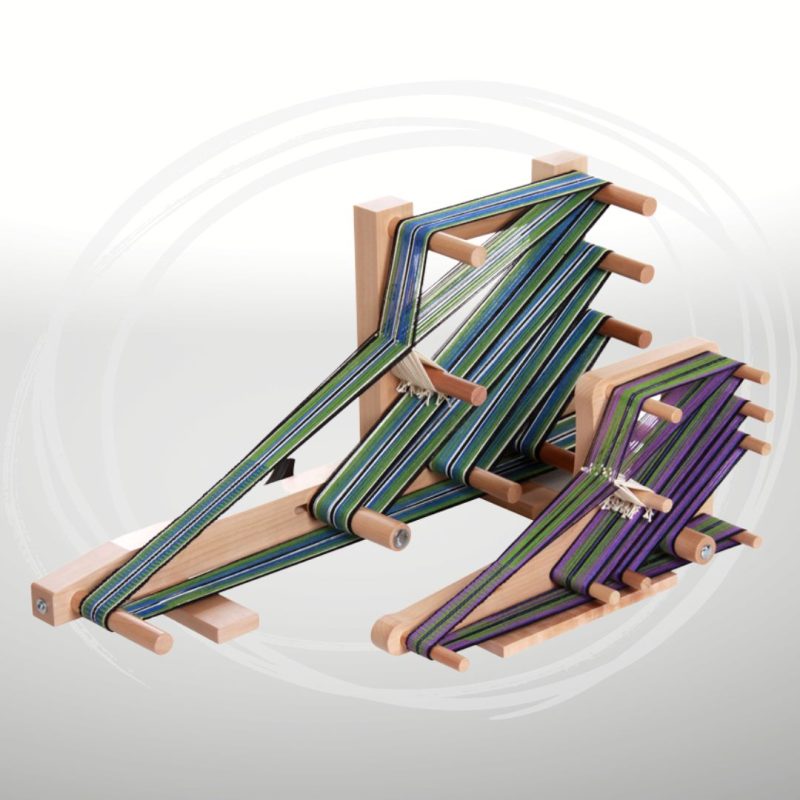
Table looms or multi-shaft weaving looms:
Table looms are larger than frame and rigid heddle looms, but still relatively compact and easy to use. They have a larger range of capabilities than other beginner looms and used to create a wider range of patterns and fabrics. However, they are also more expensive than other options. Ashford have a fantastic range of table looms in various sizes.
Ultimately, the best loom for you will depend on your budget, space constraints, and the projects you want to make. It’s a good idea to do some research and try out different types of looms before making a purchase.
You can read more about multi shaft table looms here
Is a 4 shaft or an 8 shaft table weaving loom easiest for a beginner?
Benefits of a 4 shaft table loom
For a beginner weaver, a 4-shaft table weaving loom is generally easier to learn on. Especially compared to an eight-shaft loom. Here’s why:
Simplicity: A 4-shaft loom has fewer shafts and treadles to manage, making it less overwhelming for beginners. The weaving patterns you can create on a 4-shaft loom are still quite diverse and can produce a wide range of designs.
Fundamentals: Starting with a 4-shaft loom allows you to grasp the foundational principles of weaving. Such as understanding basic weave structures, how to thread the loom, and how to operate the treadles. Once you have a good grasp of these basics, you can then progress to more complex looms like an eight-shaft.
the choice of loom ultimately depends on your personal preferences and goals
That being said, the choice of loom ultimately depends on your personal preferences and goals. For intricate patterns and a deeper weaving journey, consider the versatile eight-shaft weaving loom as a valuable investment. However, if you’re looking for a simpler learning curve and a versatile loom, a 4-shaft loom is an excellent choice. It will also allow you to create a variety of designs for a beginner weaver.
Brooklyn Four Shaft Weaving Loom
The Brooklyn four shaft loom has been designed by Ashford as a cost-effective transition for rigid heddle weavers. The Brooklyn four shaft weaving loom lets you broaden your skills and delve into the captivating realm of multi-shaft weaving. Created as the perfect loom for educational settings, the Brooklyn loom effortlessly facilitates the weaving of intricate multi-shaft patterns. Also with the with utmost simplicity.
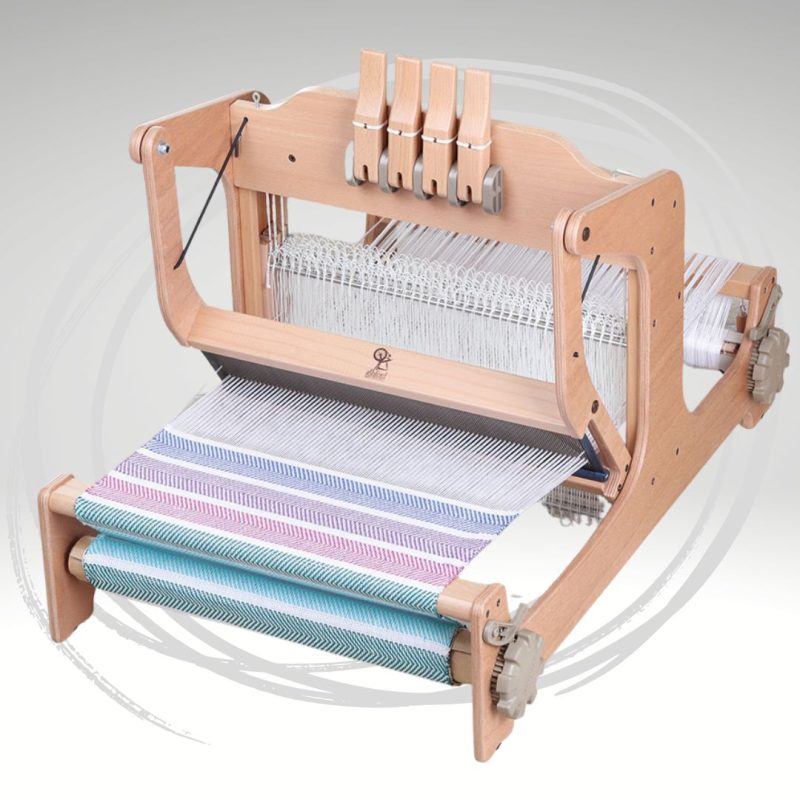
Benefits of an 8 shaft table weaving loom
Weaving with an Ashford 8 shaft table loom offers many benefits for more experienced weavers. Ashford have also published a wonderful book “Ashford Book of Weaving Patterns from Four to Eight Shafts by Elsa Krogh”. Elsa is a well known Danish weaver, spinner and author and has brought together her favourite weaving patterns using four, six and eight shafts.
- Versatility & Flexibiliity in Designs: An 8 shaft table loom provides more shafts than a basic 4-shaft loom, allowing for greater design possibilities. By using eight shafts, you can create more complex patterns, textures, and structures in your weaving. The additional shafts enable you to weave intricate designs like twills, lace weaves, and block weaves. This versatility is especially beneficial for experienced weavers who want to explore complex weave structures and push their creativity.
- Pattern Repetition: With more shafts, you can achieve longer pattern repeats in your woven fabric. This means you can create larger motifs or repeat patterns over a longer distance, resulting in visually appealing and dynamic textiles. This can add depth and complexity to your woven projects.
- Efficiency: An 8-shaft table loom allows for efficient and faster weaving compared to a smaller loom with fewer shafts. With each lift of the shafts, you can create a greater variety of sheds (the space between the raised and lowered warp threads), which speeds up the weaving process. This efficiency is particularly advantageous when working on larger projects or when weaving complex designs that require frequent shaft changes.
What can you make with a weaving loom?
Weaving looms can be used to create a wide range of textile-based projects. Here are a few examples of things you can make with a weaving loom:
The possibilities are endless. You can weave scarves, shawls, wall hangings, rugs, mats, clothing, bags and so much more. The most popular & versatile weaving loom is the Ashford Rigid Heddle Loom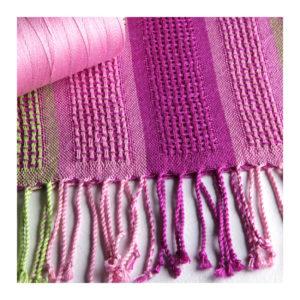
Scarves & shawls: One of the most popular things to make with a weaving loom is scarves and shawls. These can be made in a variety of materials and patterns, and are a great way to showcase your weaving skills. In fact, we have a free pattern for a woven spring shawl here
Blankets: Ashford have kindly given us a free pattern that will teach you how to make a beautiful woven blanket. Perfect for all year round
Wall hangings: Weaving looms can also be used to create beautiful wall hangings, which can be used to decorate your home or office. Wall hangings can be made in a variety of sizes and styles, from small and simple to large and complex.
the possibilities are endless when it comes to what you can make with a weaving loom
Rugs and mats: Looms can be used to make woven rugs and mats that are durable and practical. These can be made in a variety of materials, including cotton, wool, and jute, and can be customized with different patterns and colors.
Clothing and accessories: Weaving looms can also be used to make clothing and accessories, such as jackets, skirts, bags, and hats. These projects require more advanced weaving skills, but can be incredibly rewarding.
Overall, the possibilities are endless when it comes to what you can make with a weaving loom. With a little creativity and practice, you can create beautiful, functional, and unique pieces that showcase your artistic talents.
Is weaving on a loom hard?
Weaving on a loom can seem difficult or even intimidating at first, but with practice and patience, it can become a fun and rewarding hobby.
With practice and patience, weaving can become a fun and rewarding hobby. To learn to weave, start by reading free tutorials, practice consistently, start simple and if possible, take classes
Like all new hobbies there are a few things to keep in mind when starting out:
Learning curve: Like any new skill, there is a learning curve when it comes to weaving. It may take some time to understand the mechanics of the loom, how to warp your loom correctly, and how to create different patterns and designs. However, to make this process easier, you will find multiple weaving tutorials on my website
with patience, practice, and a willingness to learn, weaving can be a fun and rewarding hobby.
Learning to weave
Practice: Consistent practice is key to improving your weaving skills. The more you weave, the more comfortable you will become with the process and the more confident you will feel in your abilities. You may even start to create some of your own fun techniques.
Start simple: When you are first starting out, it is a good idea to start with simple projects. That may mean that you use only a few colours or some basic patterns. However, this will allow you to focus on learning the basics of weaving without feeling overwhelmed.
Take classes or watch tutorials: In addition to our free downloadable tutorials, we also have loads of free youtube weaving videos that will help get you started. Taking a class or watching online tutorials can be a great way to learn more about weaving techniques and get inspiration for new projects.
Overall, weaving on a loom may take some time to master, but with patience, practice, and a willingness to learn, it can be a fun and rewarding hobby.
Common mistakes in weaving
As with any new skill, there are a few common mistakes that beginners often make when weaving. Here are a few examples:
Tension issues:
One of the most common mistakes in weaving is having uneven tension in the warp or weft threads. This can cause your fabric to be uneven or even to buckle. To avoid this, make sure to maintain consistent tension throughout your weaving.
Skipping warp threads:
Another common mistake is skipping warp threads when weaving. This can create gaps or holes in your fabric. To avoid this, make sure to keep track of your warp threads and ensure that you are weaving over and under each one correctly.
Beat too tight or too loose:
A common mistake is beating the weft too tightly or too loosely, which can cause your fabric to be too dense or too loose. It’s important to find the right balance between beating the weft enough to create a stable fabric, but not so tightly that it distorts the warp.
Misreading the pattern:
If you are working with a pattern, it’s important to read and follow the instructions carefully. Misreading the pattern or skipping steps can lead to mistakes in your weaving.
Not adjusting the tension during weaving:
Tension adjustments are necessary as you weave, and failing to make them can cause tension issues in your weaving.
These are just a few of the common mistakes that can occur when weaving. With practice and patience, you can learn to avoid these mistakes and create beautiful, high-quality woven pieces.
Learn the simplest type of weaving
The simplest type of weaving is plain weave. In plain weave, the warp and weft threads alternate over and under each other in a simple, over-under pattern. This creates a tight, stable fabric that is strong and durable.
Plain weave is often used as a starting point for beginners learning to weave because it is straightforward and easy to understand. You can plain weave on a variety of looms, including rigid heddle looms and floor looms, and can be made with a variety of materials, including cotton, wool, and silk.
While plain weave may be simple, you can use it to create a wide range of beautiful projects, from scarves and shawls to table runners and placemats. By experimenting with different colors and textures of yarn, you can create unique and stunning woven pieces using plain weave.
The basics of weaving explained
The basics of weaving involve the following steps:
What is ‘warp and weft’ in weaving?
In weaving, “warp and weft” are the dynamic duo that makes your textile projects come to life. Imagine them as the Batman and Robin of the woven fabric world, each with its crucial role.
What is a warp?
The “warp” is like the foundation, the vertical threads that run lengthwise on a loom. They’re the backbone, holding everything together. Think of them as the building’s sturdy pillars.
What is a weft?
On the other hand, the “weft” is the horizontal thread that weaves over and under the warp threads. It’s like the paint on a canvas, adding colour and pattern. Wefts create the design and give fabric its personality.
Together, warp and weft form a beautiful dance. The warp provides stability, while the weft adds artistic flair. Weavers use this interplay to craft intricate patterns and textures. From cosy blankets to elegant clothing, warp and weft unite to create the fabrics we cherish. They’re the unsung heroes behind our everyday textiles, working seamlessly to bring comfort and style to our lives.
Warping:
The first step in weaving is to create a warp, which is a set of parallel threads that run vertically on the loom. This involves wrapping the yarn around the loom, tying the ends to the beam, and then threading the individual warp threads through the heddles and the reed.
Weaving:
Once the loom is warped, you can begin weaving the weft threads horizontally through the warp threads. This involves passing the weft thread over and under the warp threads in a pattern to create the desired design.
Beating:
After each weft thread is woven through the warp threads, it is important to beat it down with a beater to ensure that the fabric is even and dense.
Tension:
Throughout the weaving process, it is important to maintain consistent tension on the warp and weft threads to ensure that the fabric is even and doesn’t pucker or sag.
Finishing:
Once the weaving is complete, the fabric can be cut off the loom and finished by washing and pressing. This sets the fibres and creates the desired drape and texture.
These are the basic steps involved in weaving. Of course, there are many variations and techniques that can be used to create different types of weaves and designs. However, these basic steps form the foundation of all weaving projects.
-
Fiori Australian DK IV Hand Dyed Merino Yarn
-
Cottolin 8/2 – Cotton Linen Blend – 200gm cone
-
Brooklyn Four Shaft Weaving Loom
-
Ashford Double Knit 8 Ply Yarn
-
8 Shaft Table Weaving Loom Kit – 80cm
-
Weaving Loom Kit – 61cm Eight Shaft Table Loom
-
8 Shaft Table Weaving Loom Kit – 41cm
-
SampleIt Loom Complete Kit – 40cm
-
70cm Knitters Loom with carry bag – includes second heddle kit
-
50cm Knitters Loom with carry bag – includes second heddle kit
-
Rigid Heddle Loom Stand for 120cm
-
Rigid Heddle Loom – 60cm -The Complete Learners Weaving Kit
-
Rigid Heddle Loom – 80cm -The Complete Learners Weaving Kit
-
SampleIt Loom Complete Kit – 25cm
-
Ashford Triple Knit 12Ply Yarn

